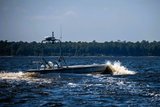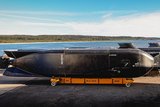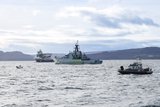Rescue 21 gets 'Safety of Life at Sea' Declaration
The General Dynamics-built Rescue 21 system has achieved 'Safety of Life at Sea' Declaration from US Department of Homeland Security, the company announced on 3 March.
The US Coast Guard declared 'Sea Area A1' service in certain areas off the US coast based on the system's performance. It has processed over 75,000 SAR cases so far using the Rescue 21 system since 2009. The declaration follows testing and analysis done by the coast guard, validating that they system provides over 90% coverage for very high frequency radio distress communications and digital selective calling.
Sea Area A1 covers over 215,000nm2 of the US eastern, western and gulf coastlines, excluding Alaska, and extends 20nm into the sea. Rescue 21 watches over this area as well as over public and commercial mariners navigating national waterways and the Great Lakes.
Chris Marzilli, president, General Dynamics Mission Systems, said: 'Rescue 21 is the US Department of Homeland Security's first national public safety network that has helped to save thousands of lives, millions of dollars in property, while providing emergency backup communications for local, state and national first responders following a disaster.'
The coast guard declaration stated: 'By harnessing state-of-the-market technology, Rescue 21 enables the coast guard to execute its search and rescue missions with greater agility and efficiency, which helps save lives and property at sea and on navigable rivers.'
Rescue 21 is the coast guard's digital command, control, communications and direction-finding system, which entered into full operation in 2012. It provides life-saving location and related emergency information from mariners in distress and supports coast guard missions on behalf of the Department of Homeland Security.
More from Naval Warfare
-
![How the Anduril-HHI autonomous ship plan fits in with the US Navy’s MASC programme]()
How the Anduril-HHI autonomous ship plan fits in with the US Navy’s MASC programme
The new modular vessel is expected to be developed for both commercial and defence use, with a heavy focus on production speed and mission flexibility.
-
![Indo Pacific 2025: Autonomous systems reigned but can the Australian Defence Force afford it?]()
Indo Pacific 2025: Autonomous systems reigned but can the Australian Defence Force afford it?
Multiple autonomous systems and technologies were on display at this year’s Indo Pacific, but questions remain over how the Australian Department of Defence will balance the books.
-
![How the UK Royal Navy is powering up its hybrid fleet to combat new threats]()
How the UK Royal Navy is powering up its hybrid fleet to combat new threats
Since it announced its move towards a new “hybrid navy” earlier this year, the force has announced a number of new uncrewed technologies in the works.
-
![US and UK to begin Trident II D5 Increment 8 in October 2026]()
US and UK to begin Trident II D5 Increment 8 in October 2026
Trident II D5 Increment 8 will involve improvements to the shipboard navigation subsystem for the US Ohio and Columbia and the UK Dreadnought and Vanguard submarine classes.






















